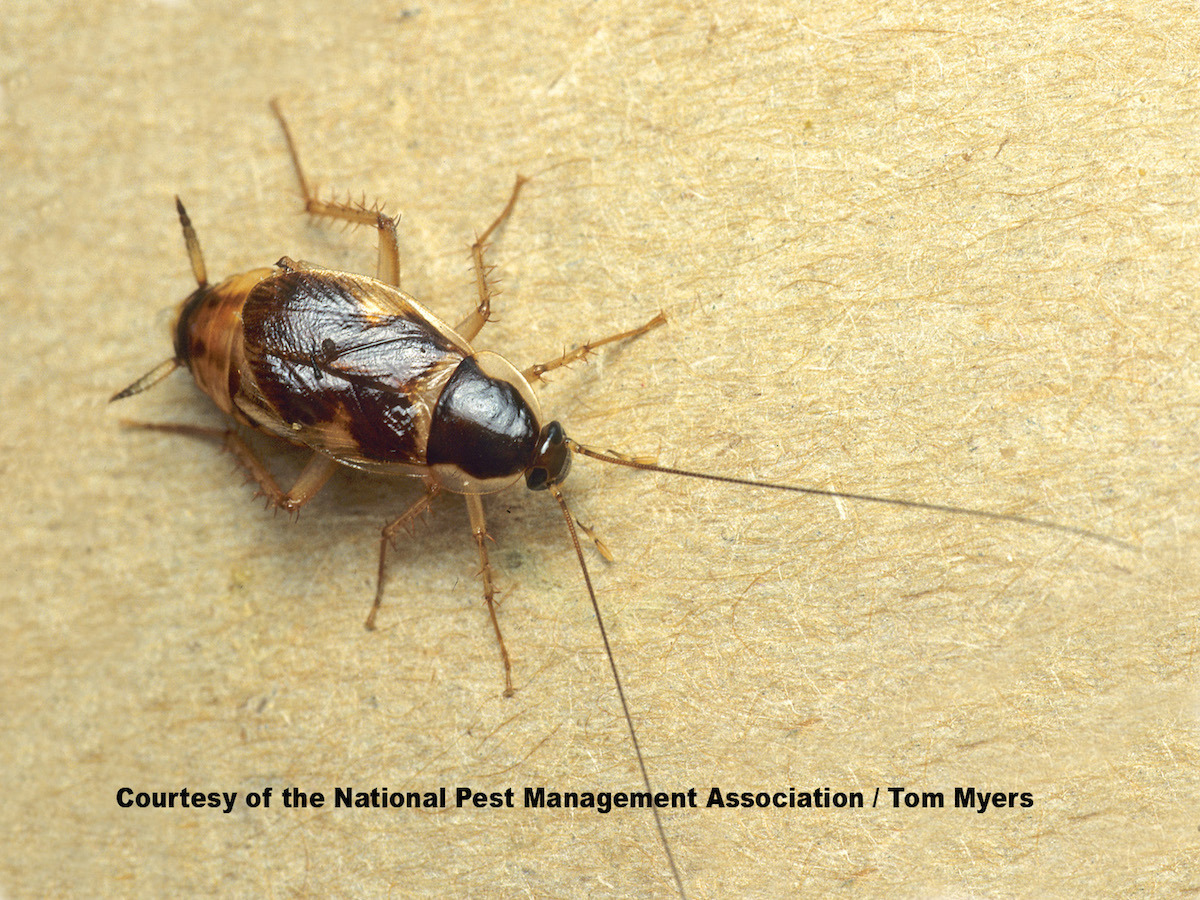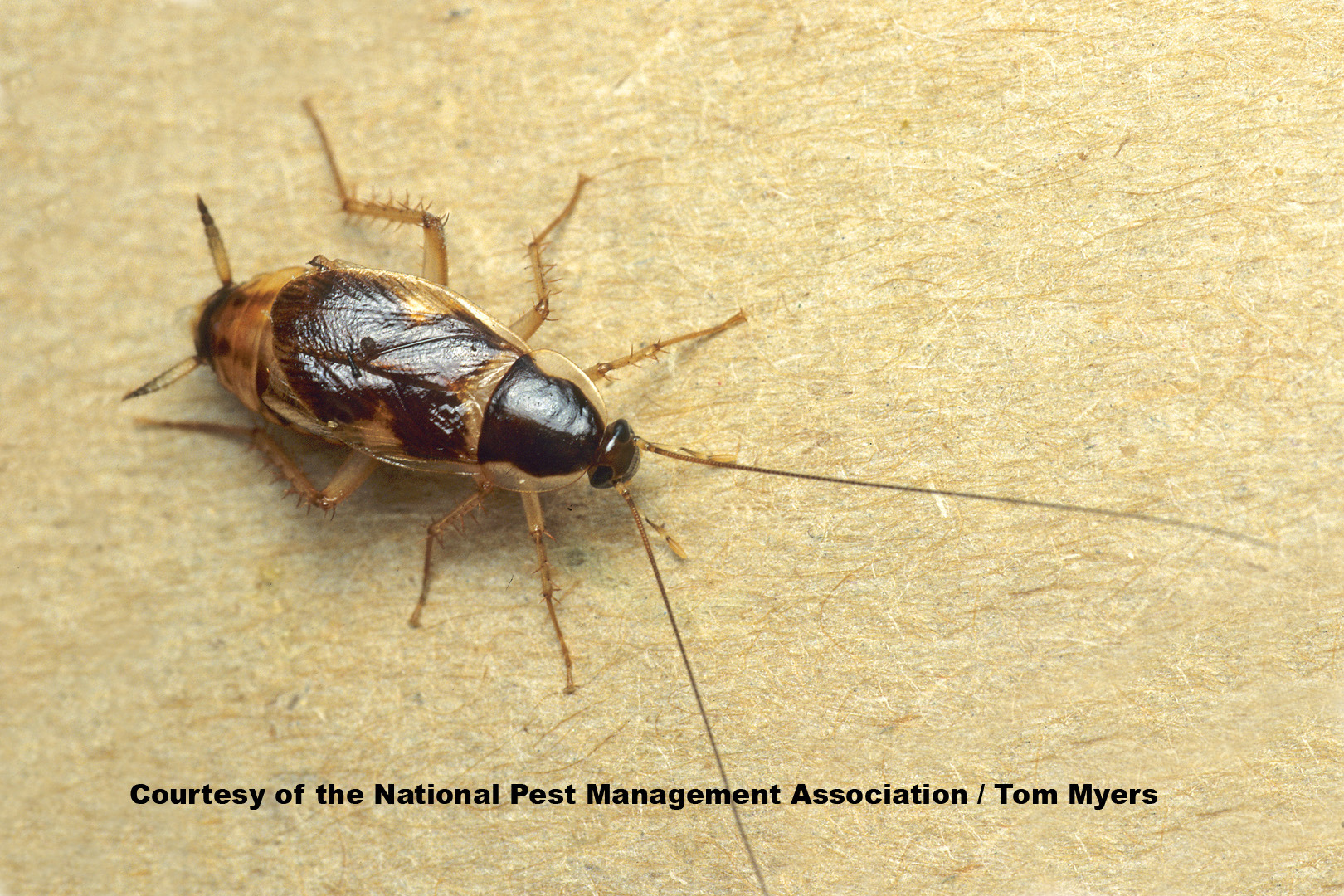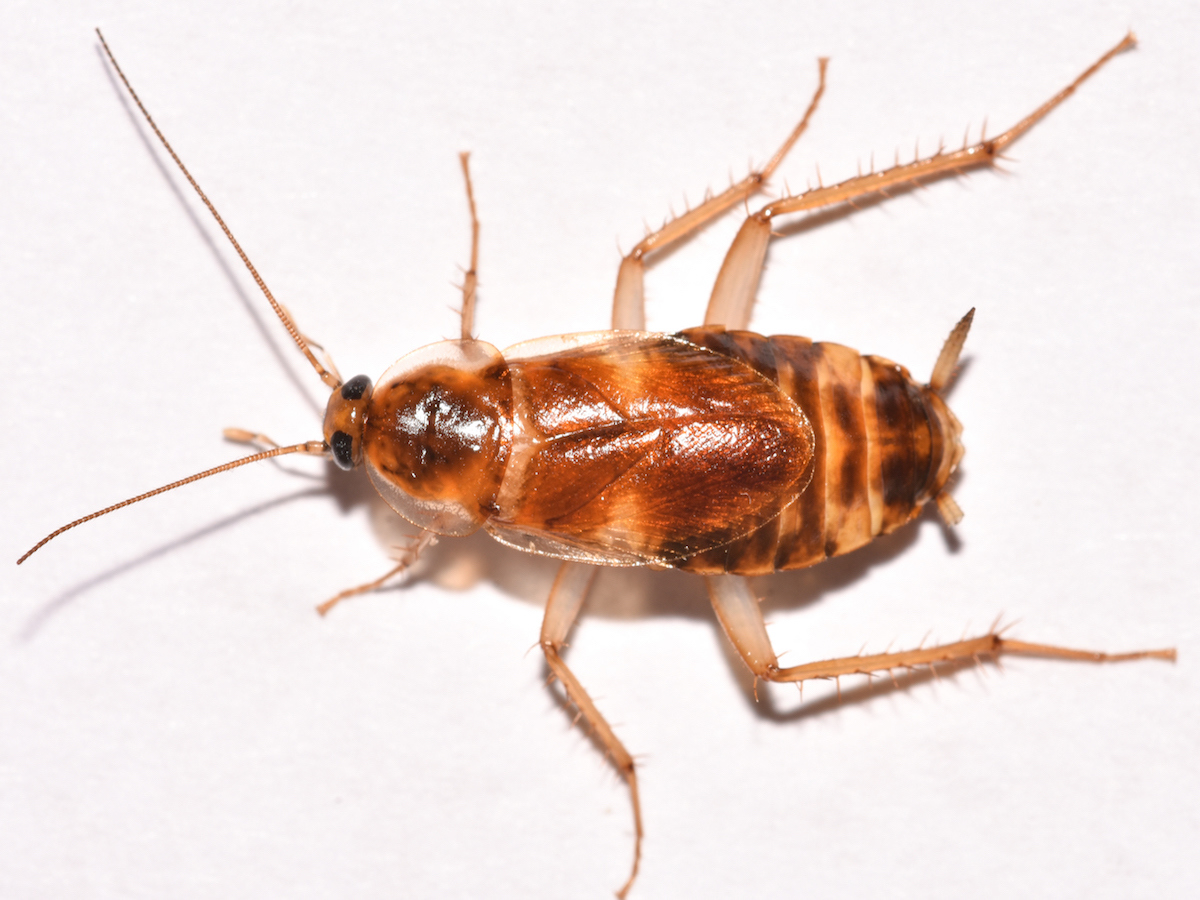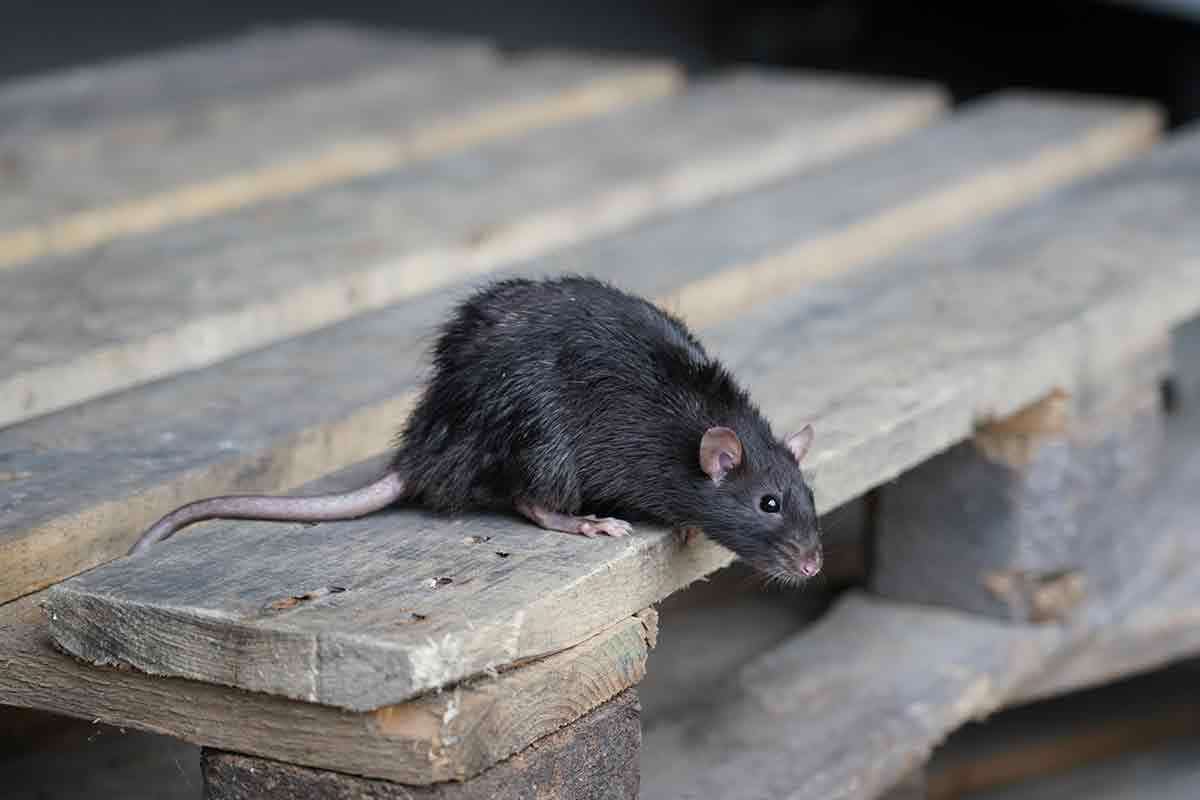Brown-Banded Cockroaches Supella longipalpa

Brown-Banded Cockroach Identification
Color: Brown, with pronounced banding across wings
Size: 1/2" long
Legs: 6
Antennae: Yes
Shape: Oval
Region: Found throughout U.S.
What are Brown-Banded Cockroaches?
Brown-banded cockroaches are a small species of invasive cockroaches. These pests get their name from the two light brown bands they have across their dark brownish bodies. These bands can be seen across the wings of the adult but are even more prominent across the body of the nymph. This cockroach species entered the United States in 1903, traveling from Cuba into Florida, and are now commonly seen throughout the US.
Brown-banded cockroaches can take shelter throughout households and are often found lurking in kitchen cabinets and bathrooms, and even behind picture frames. This species lives for 206 days on average and can reproduce at alarming rates. Females will lay about 14 egg capsules during their life span, each capsule containing 10-18 eggs, allowing this species to populate quickly. The brown-banded cockroach is primarily nocturnal but can be found on the move during daytime. However, due to their nocturnal nature and small stature, the brown-banded cockroach can easily go undetected.
What Do Brown-Banded Cockroaches Look Like?
The brown-banded cockroach, as its name suggests, has two light brown bands across their dark brown bodies. Adult brown banded cockroaches only grow to about ½” long. Male brown-banded cockroaches have full wings that reach beyond the tip of their pointed abdomens, while females have underdeveloped wings that prohibit them from flying. These roaches are oval in shape with six legs and two long antennae. Their coloring helps them blend in among furniture, cabinets and food. Female roaches tend to be much darker than males.
Brown-banded cockroaches can be found within furniture and other household items but show a preference for drier locations in warmer areas above 80 degrees. They tend to be found in higher locations than most other cockroach species, taking shelter in upper cabinets in kitchens and bathrooms, as well as congregating near ceilings. However, these roaches often hide their egg cases in or under furniture. Brown-banded cockroaches also like to live among electronic equipment, such as refrigerator motors, and tend to avoid water and bright light. Due to their small size and brown color, the brown-banded cockroach can be easily blend into their surroundings and be difficult to spot.
Being nocturnal, brown-banded cockroaches are often most active at night. However, they can be found during the day, typically looking for food. They enter homes and structures looking for shelter and once they find it, they will remain hidden for the majority of the day. If disturbed, males will take flight while females will run away.
The brown-banded cockroach will feed on almost anything, even other cockroach species. Their diet consists of trash, food items, drapes and boxes and also items with high starch levels like wallpaper glue and book bindings. They may also feed on dyes and pastes, including portions of envelopes and wallpaper. These pests are often carried into the home via infested food, furniture, or grocery items, and then rarely leave once inside. These roaches will remain anywhere they have access to food and a warm, dry shelter.
Brown-branded cockroaches can cause multiple health issues. They have been reported to carry many microorganisms on their bodies, spread pathogens, and also be a source of allergens. They can pick up germs on their legs and bodies as they crawl through decaying matter or sewage and then carry these into food or onto food surfaces.
Along with this, recent medical studies have shown that cockroach allergens can trigger allergies and exacerbate asthma attacks, especially in children. Brown-banded cockroaches are known to elicit allergy symptoms such as itchy eyes, sneezing and a runny nose. If household members show these symptoms, it could signal an infestation.
Brown-banded cockroach infestations can be hard to spot. The main indicator of their presence is the droppings they leave. Their droppings, which resemble black specks or smears, are usually found in spots where the roach spends a lot of time, such as cabinets or around ceiling light fixtures.
Another infestation indication are the egg cases laid by the female roaches. These cases are yellowish, less than 5mm long and are often placed underneath furniture. Later in development, the embryos inside of the egg can sometimes be visible.
However, the most common sign of an infestation is sightings of the actual cockroaches themselves. If you find one brown-banded cockroach, it is important to have an inspection performed as there are likely more nearby.
If there is evidence of a brown-banded cockroach infestation, contact a licensed pest professional to inspect and treat the brown-banded cockroach problem immediately.
You can find a certified pest professional near you with the helpful zip code search below.






